Captivating Sunsets and Vast Landscapes: Why Qinghai Lake Scenic Area Should Be on Your Bucket List
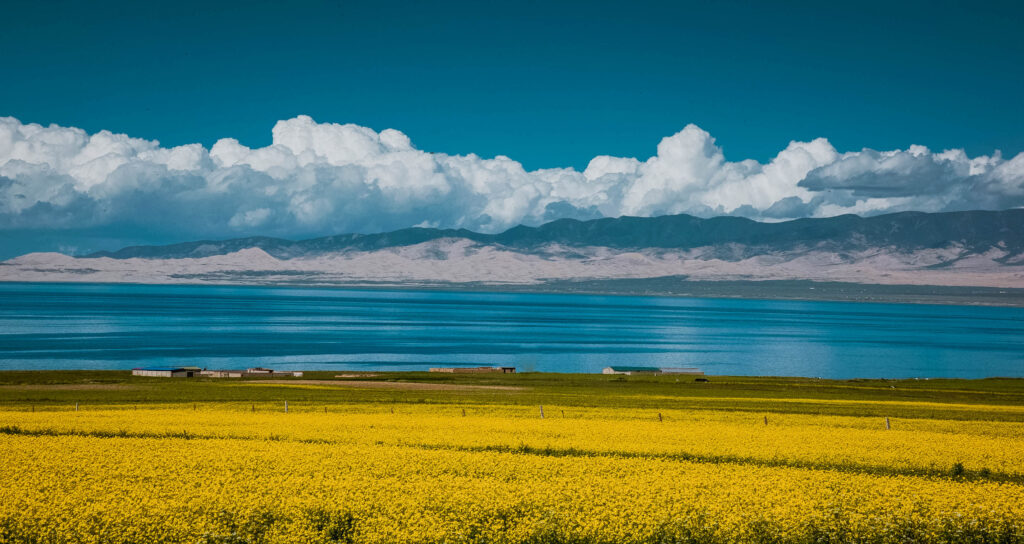
An Essential Guide to Visiting Qinghai_Lake_Scenic_Area
Nestled high on the Tibetan Plateau, the Qinghai Lake Scenic Area beckons with its breathtaking beauty and rich cultural tapestry. Spanning an impressive 4,635 square kilometers, this vast saltwater lake is not just the largest in China but also a serene sanctuary for nature enthusiasts and adventure seekers alike. Surrounded by snow-capped mountains and rolling grasslands, Qinghai Lake offers a stunning backdrop for a myriad of activities, from biking along its shimmering shores to observing migratory birds in their natural habitat.
As you venture into the heart of this enchanting region, you’ll find yourself immersed in a vibrant blend of Tibetan, Mongolian, and Muslim cultures, each leaving its unique mark on the landscape and the local way of life. The area is dotted with traditional villages, where you can experience the warmth of the local communities and savor authentic cuisine that reflects the diverse heritage of this multi-ethnic province.
Visiting Qinghai Lake is more than just a getaway; it’s an invitation to explore the untamed wilderness, engage with the rich spiritual history, and witness the remarkable interplay of nature and culture. Whether you are seeking tranquility, adventure, or a deeper understanding of China’s ethnic diversity, the Qinghai Lake Scenic Area promises an unforgettable journey that will leave you with cherished memories and a yearning to return.
In This Guide
- An Essential Guide to Visiting Qinghai_Lake_Scenic_Area
- The Rich History and Legends of Qinghai_Lake_Scenic_Area
- Main Highlights: What You Absolutely Can’t Miss
- Planning Your Visit: A Practical Guide
- Tickets: Prices, Booking, and Tips
- How to Get There: A Complete Transportation Guide
- Local Cuisine and Accommodation Nearby
- Frequently Asked Questions
- Final Thoughts on Your Trip
The Rich History and Legends of Qinghai_Lake_Scenic_Area
Nestled within the breathtaking landscapes of Qinghai Province, the Qinghai Lake Scenic Area is not only a visual feast for travelers but also a treasure trove of history and legends. This magnificent region, which encompasses the largest saltwater lake in China, has long been a cradle of cultural exchange and spiritual significance.
A Historical Overview
Qinghai Lake, known as Tsongon in Tibetan, has a profound history that dates back thousands of years. It has been a vital source of life and inspiration for the various ethnic groups that inhabit the region, including Tibetan, Mongolian, and Hui communities. Historically, the lake served as a crucial stop along the ancient Silk Road, where traders and travelers would pause to rest and replenish their supplies. This strategic location not only facilitated trade between the East and West but also fostered a vibrant exchange of ideas and cultures.
The lake is steeped in Buddhist tradition, with many legends attributing its formation to divine origins. One popular tale recounts that the lake was created from the tears of a goddess mourning for her lost love. This spiritual narrative continues to resonate with the local population, further enriching the cultural tapestry surrounding the lake.
Legends and Spiritual Significance
Qinghai Lake is often referred to as the “Blue Sea,” a name that captures its mesmerizing azure waters and the ethereal beauty that surrounds it. The lake holds a sacred position in Tibetan Buddhism, where it is regarded as a holy site. Pilgrims often flock to the shores of Qinghai Lake to perform rituals and seek blessings, especially during key festivals. The annual Qinghai Lake Festival attracts visitors from far and wide, celebrating the region’s unique culture and natural beauty through music, dance, and traditional sports.
The lake is also home to a myriad of myths and legends. One such legend tells of the White Horse God, who is said to protect the region and its inhabitants. Locals believe that he watches over the lake, ensuring harmony and balance in the ecosystem. This reverence for nature is evident in the way the communities around Qinghai Lake coexist with their environment, practicing sustainable lifestyles that honor the land.
Cultural Fusion
The rich history of the Qinghai Lake Scenic Area is not only marked by its natural beauty but also by the vibrant cultural fusion that characterizes the province. The interplay of Tibetan, Mongolian, and Hui customs creates a unique cultural landscape where traditional practices are celebrated alongside modern influences. Visitors can witness this blend through local festivals, culinary delights, and artisanal crafts, all of which reflect the diverse heritage of the region.
Exploring the area around Qinghai Lake offers a chance to experience this cultural richness firsthand. Engage with local communities, participate in traditional ceremonies, or simply take in the serene beauty of the lake’s surroundings. Each encounter unveils stories of resilience, spirituality, and a deep connection to the land.
Conclusion
The Qinghai Lake Scenic Area is more than just a stunning destination; it is a living narrative of history and legend, where the past and present coexist in harmony. As international travelers venture into this enchanting realm, they will not only be captivated by its breathtaking scenery but also by the profound stories that echo through the windswept plains and shimmering waters of Qinghai Lake. Whether you seek adventure, cultural immersion, or spiritual reflection, this remarkable region promises an unforgettable journey into the heart of China’s rich heritage.
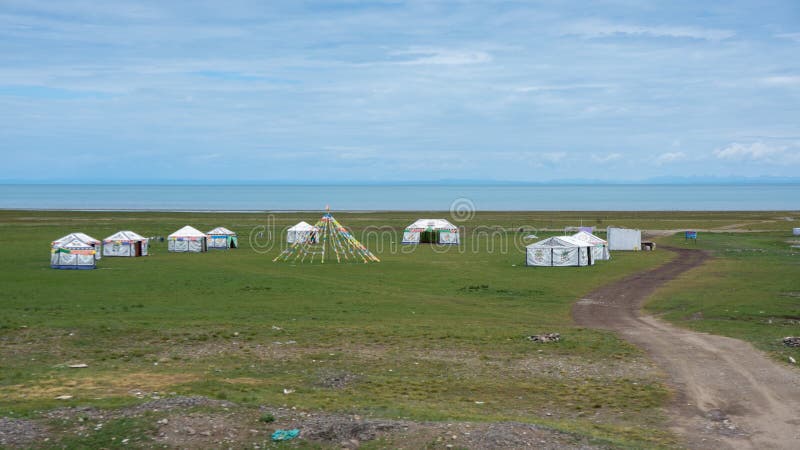
Qinghai_Lake_Scenic_Area.
Main Highlights: What You Absolutely Can’t Miss
When you set foot in the breathtaking Qinghai Lake Scenic Area, prepare to be captivated by a stunning blend of nature, culture, and adventure. Below are the essential highlights that you absolutely cannot miss during your visit to this remarkable destination.
Qinghai Lake: China’s Largest Saltwater Lake
Begin your journey with a visit to Qinghai Lake itself, the crown jewel of the province. Spanning an impressive 4,635 square kilometers, this vast inland saltwater lake boasts a mesmerizing blue hue that gives the province its name. Whether you choose to cycle around the lake’s perimeter or simply take in the sweeping vistas from one of the many viewpoints, the combination of azure waters and surrounding snow-capped mountains creates a stunning backdrop that will leave you in awe.
Chaka Salt Lake: The Sky Mirror
Just a short drive from Qinghai Lake lies Chaka Salt Lake, often referred to as the “sky mirror.” This ethereal lake is famous for its reflective waters, which create breathtaking mirror images of the sky above. It’s an ideal location for photography enthusiasts and those looking to capture romantic moments. Stroll along the boardwalks, admire the stunning landscapes, and keep your camera ready for the perfect shot.
Kumbum Monastery: A Cultural Treasure
Located in Xining, the capital of Qinghai Province, Kumbum Monastery is one of the two most significant Tibetan Buddhist monasteries outside of Tibet. Step inside to witness the intricate yak butter sculptures and vibrant murals that adorn the walls. Take a moment to observe the monks as they engage in traditional debates and daily rituals, providing you with a unique insight into Tibetan Buddhist culture. As the birthplace of Je Tsongkhapa, the founder of the Gelug school of Tibetan Buddhism, Kumbum Monastery is a must-visit for anyone interested in spiritual heritage.
The Qilian Mountains: Nature’s Playground
For those seeking adventure, the Qilian Mountains offer an array of outdoor activities that cater to all skill levels. Trek through alpine meadows, enjoy breathtaking views of glaciated landscapes, and spot diverse wildlife in this pristine ecosystem. The mountains are particularly beautiful in summer when wildflowers bloom and the air is crisp, making it an excellent time for hiking and exploration.
Experience Diverse Cultures
Qinghai is a melting pot of cultures, predominantly featuring Tibetan, Hui, Mongolian, Tu, and Salar ethnic groups. Engage with local communities to experience their unique customs, traditions, and culinary delights. Attend a vibrant festival if your visit coincides with one, and savor the rich flavors of local dishes, from hearty Tibetan noodles to savory Hui-style lamb dishes.
The Qaidam Basin: A Martian Landscape
This high-altitude basin is renowned for its otherworldly landscapes that can make you feel as if you’ve stepped onto another planet. The stark contrast of the arid terrain against the backdrop of the blue sky creates an unforgettable visual experience. Take a guided tour to learn about the unique geological features and the natural resources that this area has to offer.
Best Time to Visit
Plan your visit between May and October for the best weather conditions. Late spring marks the awakening of nature, with verdant grasslands and migratory birds flocking to the lake. Summer showcases colorful rapeseed fields and lively festivals, while autumn offers stunning golden landscapes. Even in winter, the serene beauty of Qinghai is a sight to behold, perfect for those seeking solitude and tranquility.
Conclusion
With its stunning natural beauty, rich cultural heritage, and endless opportunities for adventure, the Qinghai Lake Scenic Area is an unmissable destination for any traveler. Whether you’re cycling around the tranquil waters of Qinghai Lake, exploring the spiritual depths of Kumbum Monastery, or enjoying the breathtaking landscapes of the Qilian Mountains, you’re sure to create unforgettable memories in this remarkable part of China.
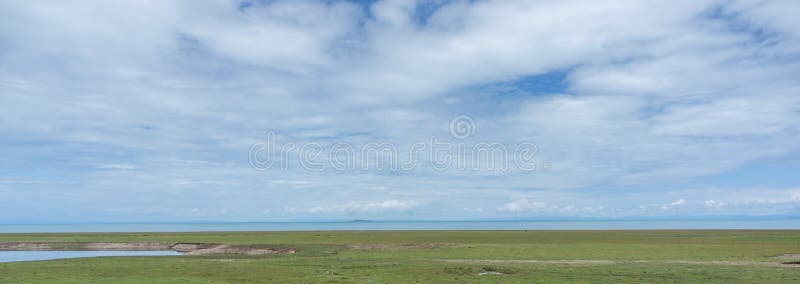
Qinghai_Lake_Scenic_Area.
Planning Your Visit: A Practical Guide
Planning Your Visit: A Practical Guide to Qinghai Lake Scenic Area
Getting There
Qinghai Lake Scenic Area is nestled in the northeastern part of Qinghai Province, approximately 150 kilometers (93 miles) from Xining, the provincial capital. The most efficient way to reach Qinghai Lake is to fly into Xining Caojiapu Airport, which is well-connected to major cities across China. From the airport, you can either rent a car or hire a private driver to take you to the lake. Alternatively, long-distance buses frequently run from Xining to various points around Qinghai Lake, making it accessible for budget travelers.
Best Time to Visit
The prime time to visit Qinghai Lake is from late May to early October when the weather is more temperate, and the landscapes burst into vibrant colors. May marks the arrival of migratory birds, while July brings warm weather and opportunities to witness local festivals. However, be prepared for fluctuating temperatures; even in summer, nights can be chilly. If you prefer solitude and a winter wonderland, visiting between December and February provides a serene experience, albeit with harsher weather.
Accommodation Options
While Xining offers a range of accommodations from luxury hotels to budget guesthouses, options near Qinghai Lake are more limited and tend to be simpler. You will find a selection of local stilted hotels, often built to withstand the cold winters. These accommodations typically offer a basic experience, with few Western amenities. It’s advisable to book ahead, especially during peak tourist season, and to manage your expectations regarding comfort and service.
What to Pack
Packing for Qinghai Lake requires a balance between summer and winter gear due to its high-altitude climate. Essentials include:
- Layered Clothing: Bring lightweight layers for the daytime, warmer clothing for the evenings, and a windproof jacket.
- Comfortable Footwear: Hiking boots are recommended for exploring surrounding areas.
- Sunscreen and Sunglasses: The strong UV rays at high altitudes can be harsh on your skin and eyes.
- Camera Equipment: The stunning landscapes and diverse wildlife make for fantastic photo opportunities.
- Water Bottle: Stay hydrated while exploring; local tap water isn’t always safe to drink.
Activities to Enjoy
-
Biking Around the Lake: One of the most popular activities at Qinghai Lake is biking along its shores. Numerous rental shops offer bicycles, allowing you to soak in the breathtaking views while enjoying a leisurely ride.
-
Bird Watching: From May to late summer, the lake becomes a birdwatcher’s paradise with migratory species flocking to the area. Don’t forget your binoculars!
-
Cultural Experiences: Engage with local Tibetan and Muslim cultures by visiting nearby nomadic communities. You can learn about their traditional lifestyles and even sample local delicacies.
-
Photography: The stunning landscapes of Qinghai Lake, especially during sunrise or sunset, are perfect for photography enthusiasts. Capture the vibrant colors of the lake, the snow-capped Qilian Mountains, and the vast grasslands.
-
Hiking: There are numerous trails around the lake and in the surrounding mountains. Popular hiking spots include the nearby Chaka Lake and the Qilian Mountains, which offer scenic vistas and opportunities for wildlife sightings.
Transportation Around the Lake
While public transportation options exist, renting a car or hiring a private driver can be more convenient for exploring the scenic area. This allows you the flexibility to visit various viewpoints and attractions at your own pace. If you prefer a guided experience, consider booking a tour that includes transportation, ensuring you make the most of your visit without the hassle of navigating.
Safety and Health Tips
- Altitude Considerations: Qinghai Lake is situated at a high elevation, so take time to acclimatize and stay hydrated. If you experience symptoms of altitude sickness, descend to a lower elevation and rest.
- Weather Preparedness: The weather can change rapidly, so check forecasts and be prepared for sudden rain or temperature drops.
- Respect Local Customs: When visiting local communities, be mindful of cultural practices and dress modestly, especially in religious sites.
Conclusion
Qinghai Lake Scenic Area is an enchanting destination that offers a unique blend of stunning natural beauty, rich cultural experiences, and a sense of adventure. By planning ahead and respecting the local environment and culture, you can ensure a memorable visit to this remarkable region of China. Whether you’re biking along the shores, soaking in the vibrant colors of the landscape, or engaging with the local communities, Qinghai Lake promises an unforgettable experience.
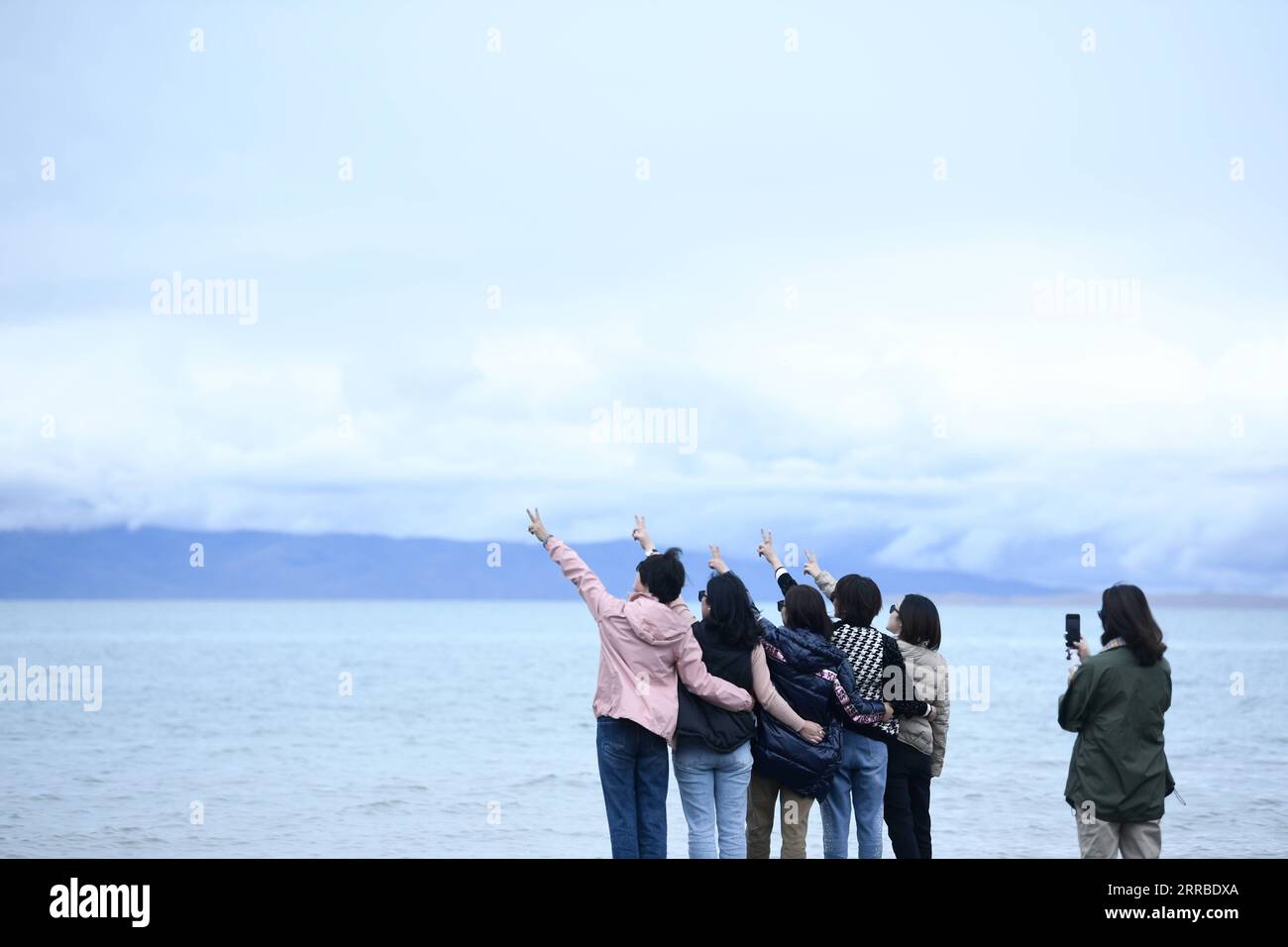
Qinghai_Lake_Scenic_Area.
Tickets: Prices, Booking, and Tips
When planning your visit to the breathtaking Qinghai Lake Scenic Area, understanding ticket prices, booking options, and insider tips can enhance your experience considerably. Here’s what you need to know to make your journey smooth and enjoyable.
Ticket Prices
Admission to Qinghai Lake Scenic Area is quite reasonable, with ticket prices typically ranging from CNY 40 to CNY 100 (approximately $6 to $15 USD). The price may vary depending on the season and specific areas you wish to access, such as bike rentals or boat trips on the lake.
Booking Tickets
Tickets for Qinghai Lake can be purchased in several ways:
-
On-Site Purchase: Most visitors buy their tickets directly at the entrance of the scenic area. It’s advisable to arrive early to avoid long lines, especially during peak tourist seasons.
-
Online Booking: Many travelers prefer the convenience of booking tickets online through various travel platforms or local tourism websites. This option often allows you to skip the queue and secure your spot, especially during busy holiday periods.
-
Tour Packages: Joining a guided tour is a popular option for international travelers. Numerous travel agencies offer packages that include transportation, guided tours, and entrance fees, making it a hassle-free way to explore the region.
Tips for Your Visit
-
Plan Your Visit in Advance: The best time to visit Qinghai Lake is from May to October, when the weather is mild and the scenery is vibrant. The peak season is in July, so be sure to book your tickets and accommodations early if you plan to visit during this time.
-
Dress in Layers: Given the high-altitude climate, temperatures can fluctuate significantly between day and night. Wear breathable layers and pack a light jacket, even in summer, to stay comfortable throughout your visit.
-
Explore Beyond the Lake: While Qinghai Lake is the star attraction, take time to explore the surrounding areas. The nearby Chaka Salt Lake and the Qilian Mountains offer stunning landscapes and unique cultural experiences.
-
Respect Local Culture: Qinghai is home to diverse ethnic communities, particularly Tibetan and Hui cultures. Be mindful of local customs and traditions, especially when visiting religious sites or interacting with local residents.
-
Stay Hydrated: The high altitude can lead to dehydration. Carry a water bottle and sip regularly to keep hydrated as you explore the scenic area.
-
Capture the Moment: Don’t forget your camera! The vivid colors of the lake, the surrounding mountains, and the unique wildlife present fantastic photography opportunities, especially during sunrise and sunset.
By following these guidelines, you can enhance your experience at Qinghai Lake Scenic Area and enjoy the incredible beauty and rich culture that this unique destination has to offer. Happy travels!
How to Get There: A Complete Transportation Guide
Getting to the breathtaking Qinghai Lake Scenic Area is an adventure in itself, as this remarkable destination is nestled in the heart of Qinghai Province in China. With a well-developed transportation network, reaching this stunning inland saltwater lake is convenient and straightforward, whether you’re coming from major cities in China or exploring the region itself. Here’s your complete guide to navigating your way to Qinghai Lake.
By Air
The most efficient way to arrive in Qinghai is by flying into Xining Caojiapu Airport (XNN), the largest airport in the province. It serves numerous domestic flights from major cities like Beijing, Shanghai, and Xi’an. Once you land, the airport is approximately 30 kilometers (about 19 miles) from Xining city center, where you can easily find transportation options to the lake.
For those looking for more remote access, smaller airports such as Golmud Airport and Yushu Batang Airport may also provide connections to the region, though they tend to have fewer flight options.
By Train
If you prefer a scenic train journey, Qinghai is accessible via two main railways:
– Qinghai-Tibet Railway: This iconic rail line offers stunning views as it traverses the Tibetan Plateau. It connects Xining with Lhasa, making it a remarkable route for travelers looking to explore Tibet after visiting Qinghai.
– Lanzhou-Qinghai Railway: This line connects Xining to Lanzhou, providing another convenient option for travelers coming from central China.
Trains to Xining typically arrive in the city, from where you can continue your journey to Qinghai Lake.
By Road
Once in Xining, the most common way to reach Qinghai Lake is by road. The distance from Xining to Qinghai Lake is about 150 kilometers (approximately 93 miles), and several options are available:
Long-Distance Buses
Regular bus services operate from Xining to Qinghai Lake, with departures from the Xining East Bus Station. The journey takes approximately 2.5 to 3 hours, depending on traffic and road conditions. Buses are an affordable way to enjoy the scenic landscapes en route.
Private Transfer
For a more personalized experience, consider hiring a private vehicle with a driver. This option allows you to stop at various viewpoints along the way, and it’s particularly recommended for groups or families looking for convenience and flexibility.
Self-Driving
If you’re comfortable navigating the roads, renting a car in Xining is a viable choice. The drive to Qinghai Lake is relatively straightforward, with well-maintained roads and clear signage. However, be mindful of the altitude and changing weather conditions, especially if you’re not accustomed to high-altitude driving.
Local Transportation
Upon arriving at Qinghai Lake, there are various ways to explore the scenic area:
– Bicycle Rentals: Biking around the lake is a popular activity, with rental shops available near the main attractions. Cycling allows you to fully immerse yourself in the stunning landscape and take in the fresh air.
– Guided Tours: Organized tours can provide deeper insights into the area’s cultural and natural history, often including transportation to key sites around the lake.
Final Tips
- Altitude Awareness: Qinghai Lake sits at an impressive altitude of around 3,200 meters (10,500 feet). Be sure to stay hydrated and take it easy on your first day to acclimatize to the elevation.
- Travel Season: The best time to visit is from May to October, when the weather is mild and the landscapes are vibrant. Be prepared for varying temperatures, even in summer, as nighttime can still be quite chilly.
By planning your transportation ahead of time, you can focus on soaking in the breathtaking beauty and unique cultural experiences that Qinghai Lake has to offer. Whether you choose to fly, take the train, or drive, your journey to this remarkable destination is sure to be memorable.
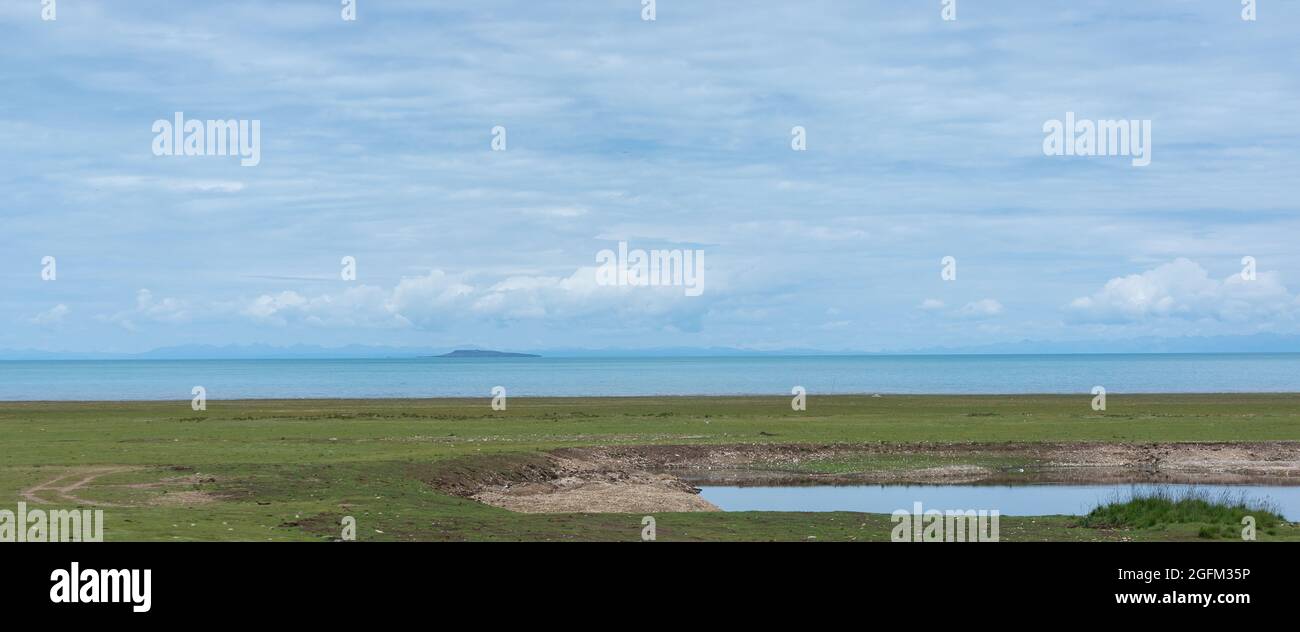
Qinghai_Lake_Scenic_Area.
Local Cuisine and Accommodation Nearby
When visiting the stunning Qinghai Lake Scenic Area, you’re not just treated to breathtaking natural beauty but also a rich tapestry of local cuisine and unique accommodation options that reflect the region’s diverse culture and traditions.
Culinary Delights of Qinghai Lake
Qinghai’s cuisine is a delightful fusion of Tibetan, Mongolian, and Hui influences, offering a unique culinary experience for international travelers. Here are some must-try dishes that you should indulge in during your visit:
-
Thukpa: This traditional Tibetan noodle soup is a favorite among locals and visitors alike. Made from hand-pulled noodles, vegetables, and often meat, it’s both hearty and warming—perfect for the cooler high-altitude climate.
-
Yak Meat: Known for its lean and flavorful qualities, yak meat is a staple in Qinghai. Try it grilled, in stews, or as part of a hearty hot pot for an authentic taste of the region.
-
Momos: These Tibetan dumplings are filled with meat or vegetables and are a delicious snack or appetizer. Steamed or fried, they are often served with a spicy dipping sauce that adds a kick to every bite.
-
Qinghai Lake Fish: Freshwater fish from the lake, such as the endemic species of trout, are a must-try. Enjoy it grilled or in a light broth to appreciate its delicate flavor.
-
Butter Tea (Po Cha): This traditional Tibetan drink, made from tea, yak butter, and salt, is a unique experience. It’s rich and creamy, providing a perfect energy boost during your explorations.
Accommodation Options Near Qinghai Lake
While the area around Qinghai Lake offers a range of accommodations, options can vary significantly in terms of comfort and amenities. Here are some recommendations that cater to different budgets, ensuring a comfortable stay:
-
Luxury Option: Shangri-La Hotel, Xining
Located in Xining, about 3 hours from Qinghai Lake, this luxurious hotel offers stunning views and top-notch service. With spacious rooms, a spa, and fine dining options, it’s an excellent base for exploring the region. -
Mid-Range Choice: Qinghai Lake Hotel
Situated near the lake, this hotel offers comfortable accommodations with beautiful lake views. It’s a great place to relax after a day of exploration, with a restaurant serving local dishes. -
Budget-Friendly Stay: Tibetan Homestays
Experience authentic Tibetan culture by staying in a local homestay. These accommodations offer basic amenities and a chance to engage with local families, allowing you to immerse yourself in the vibrant culture of the area. -
Unique Experience: Yurt Camping
For those seeking adventure, consider spending a night in a traditional Mongolian yurt. Campsites near Qinghai Lake often provide these cozy accommodations, allowing you to enjoy the stunning night sky and tranquility of the plateau.
Final Thoughts
Whether you’re savoring the local flavors or unwinding in a cozy accommodation, the Qinghai Lake Scenic Area promises an unforgettable experience. Embrace the region’s rich cultural heritage as you enjoy every moment in this breathtaking corner of China.
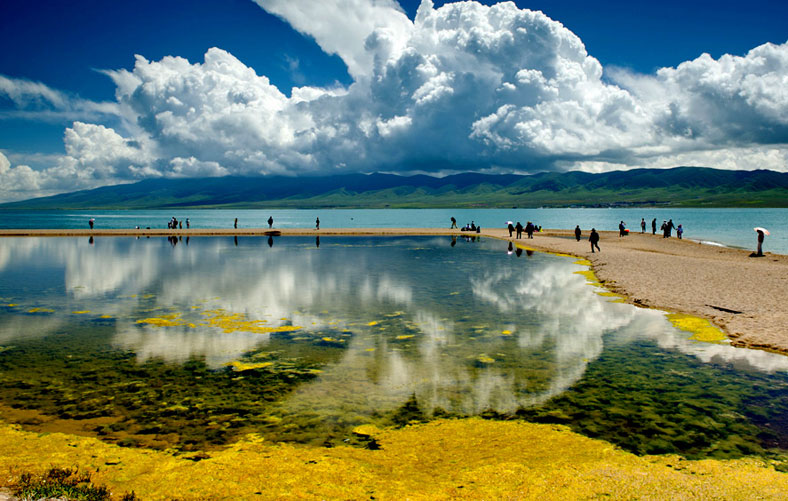
Qinghai_Lake_Scenic_Area.
Frequently Asked Questions
Frequently Asked Questions about Qinghai Lake Scenic Area
1. What is the best time to visit Qinghai Lake?
The ideal time to visit Qinghai Lake is from May to October. During this period, the weather is mild, and the landscapes are at their most vibrant. May welcomes the green grass and migratory birds, while summer showcases beautiful wildflowers and cultural festivals. Be prepared for varying temperatures, especially at night.
2. How do I get to Qinghai Lake?
Qinghai Lake is easily accessible from Xining, the capital of Qinghai Province. You can reach Xining via direct flights from major cities in China. From Xining, you can take a long-distance bus or hire a private vehicle to reach Qinghai Lake, which is about 150 kilometers (93 miles) away.
3. Are there accommodations near Qinghai Lake?
Yes, there are various accommodation options around Qinghai Lake, ranging from basic guesthouses to more comfortable hotels. However, options may be limited compared to major cities. It’s advisable to book in advance, especially during peak travel seasons, as many rural hotels may shut down during the winter off-season.
4. What activities can I do at Qinghai Lake?
Qinghai Lake offers a myriad of activities such as cycling around the lake, bird watching, photography, and enjoying the stunning high-mountain scenery. You can also explore local Tibetan culture and enjoy peaceful strolls along the shoreline.
5. Is it necessary to speak Mandarin to travel in Qinghai?
While some locals may speak basic English, especially in tourist areas, knowing a few phrases in Mandarin will greatly enhance your experience. English is generally not widely spoken outside major cities, so having a translation app or phrasebook can be very helpful.
6. What should I pack for my trip to Qinghai Lake?
Pack layers to accommodate the significant temperature changes between day and night. Include warm clothing, even in summer, as temperatures can drop below freezing at night. Don’t forget sunscreen, sunglasses, and a hat due to the strong solar radiation at high altitudes.
7. Are there any cultural customs I should be aware of?
Yes, Qinghai is home to several ethnic minorities, including Tibetans and Hui Muslims. It’s respectful to ask before taking photos of people, especially in traditional attire. When visiting monasteries, dress modestly and follow local customs, such as removing shoes when entering sacred spaces.
8. Can I visit Qinghai Lake independently, or do I need a tour guide?
While it’s possible to visit Qinghai Lake independently, hiring a local guide can enhance your experience, especially if you want to explore hidden spots and learn about the local culture. A guide can also help navigate the region’s transportation and language barriers, making your trip more enjoyable.
Final Thoughts on Your Trip
As your journey through the Qinghai Lake Scenic Area comes to a close, reflect on the rich tapestry of experiences this magnificent region has offered. From the breathtaking vistas of the largest lake in China, where shimmering waters meet the vast sky, to the serene moments spent among the diverse cultures that breathe life into this extraordinary province, every moment here is a reminder of nature’s grandeur and humanity’s shared heritage.
Qinghai is not merely a destination; it is a sanctuary for the senses, a place where the air is crisp, the landscapes are untouched, and the spirit of adventure awaits at every turn. Whether you’ve pedaled along the lake’s edge, marveled at the intricate artistry of Kumbum Monastery, or simply soaked in the tranquil ambiance of Chaka Salt Lake, each experience weaves a narrative of beauty and discovery.
As you depart from this hidden gem of China, carry with you the memories of its untamed wilderness, the warmth of its multi-ethnic communities, and the profound serenity that comes from standing at the edge of such vast beauty. Qinghai invites you to embrace the unknown and appreciate the simple joys that come from wandering freely in nature’s embrace. Until your next adventure, may the spirit of Qinghai inspire your travels and encourage you to seek out the world’s unspoiled treasures.